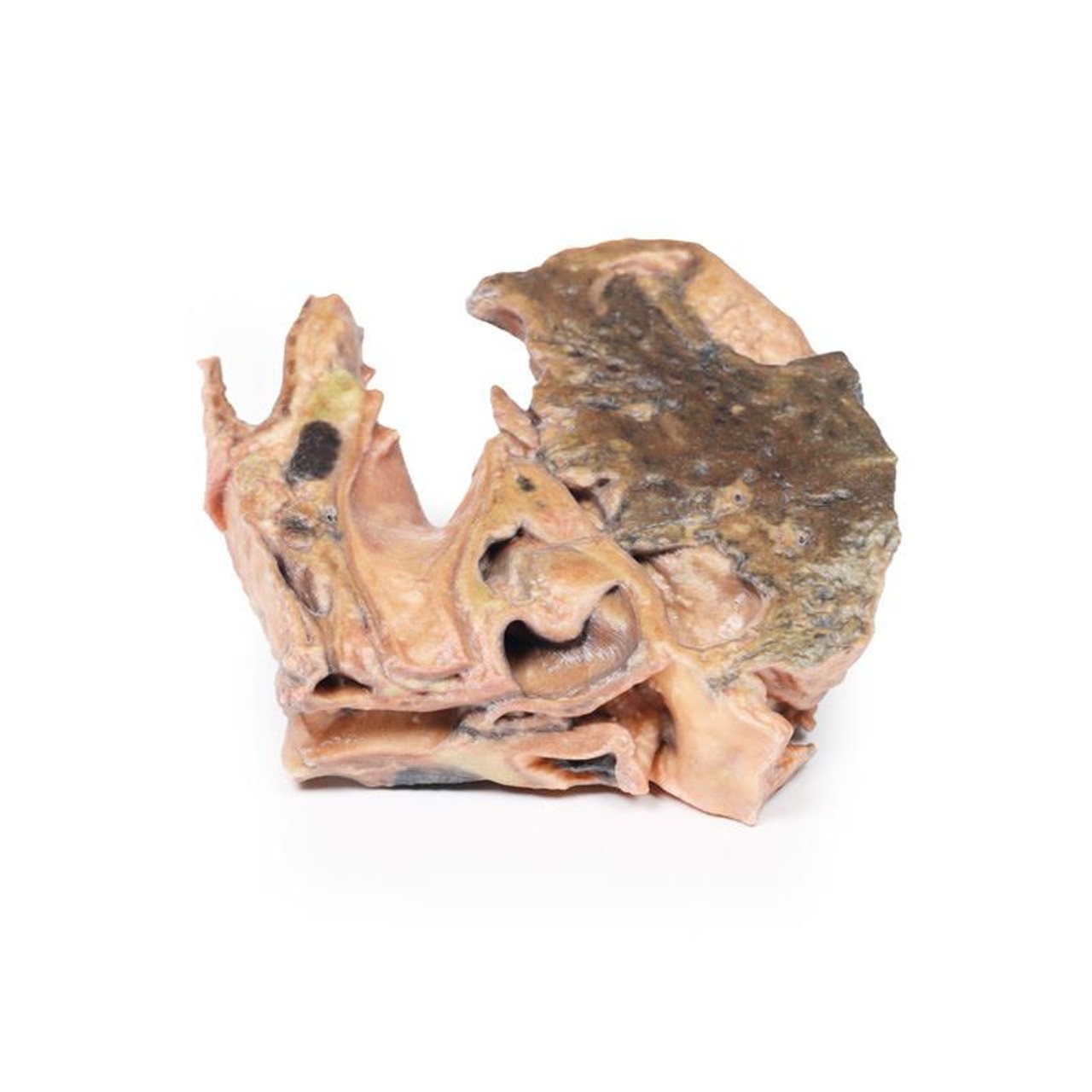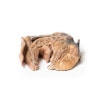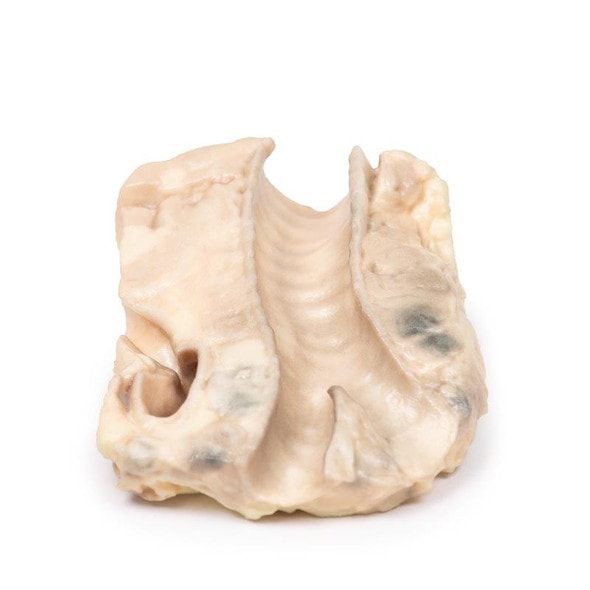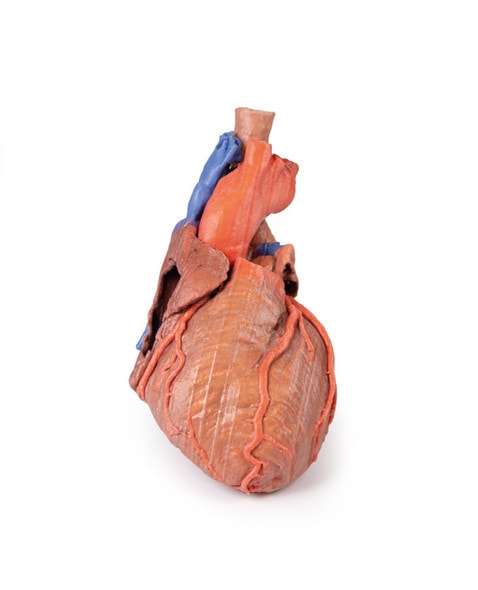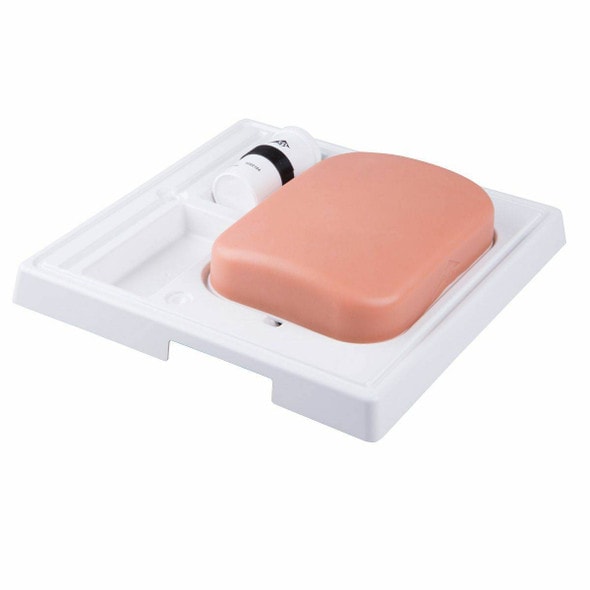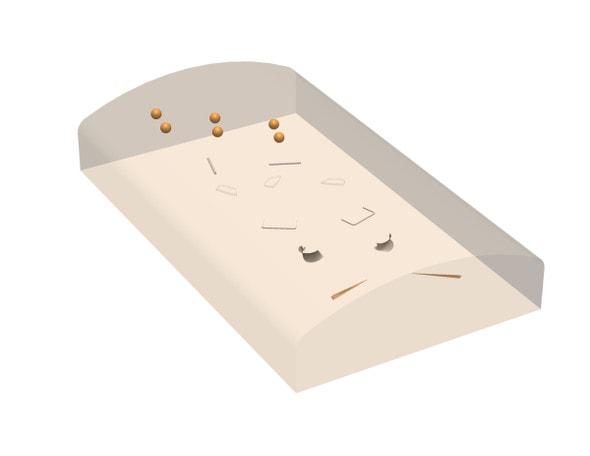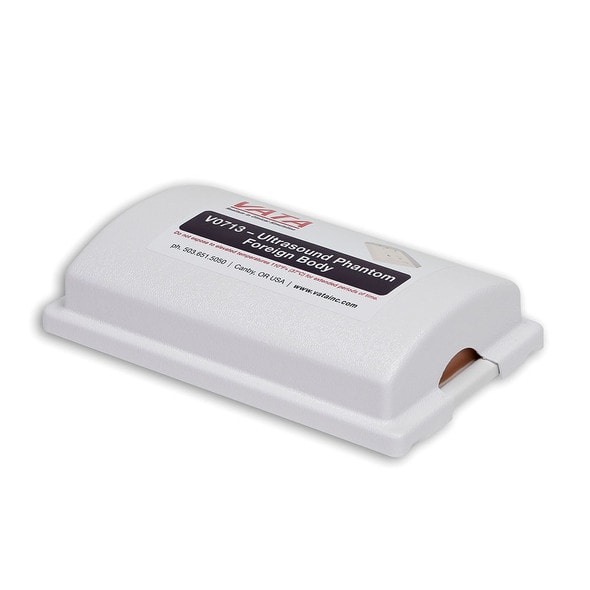- Home
- Anatomy Models
- Respiratory System Anatomy Models
- 3D Printed Inhaled Foreign Body in the Trachea
Description
Developed from real patient case study specimens, the 3D printed anatomy model pathology series introduces an unmatched level of realism in human anatomy models. Each 3D printed anatomy model is a high-fidelity replica of a human cadaveric specimen, focusing on the key morbidity presentations that led to the deceasement of the patient. With advances in 3D printing materials and techniques, these stories can come to life in an ethical, consistently reproduceable, and easy to handle format. Ideal for the most advanced anatomical and pathological study, and backed by authentic case study details, students, instructors, and experts alike will discover a new level of anatomical study with the 3D printed anatomy model pathology series.
Clinical History
A 57-year old male presented with a 3-week history of cough and pleuritic left sided chest pain. Chest x-ray showed left upper lobe collapse with large left sided pleural effusion. Pleurodesis aspirated frank pus from the pleural cavity. He later died despite pleural drainage and antibiotic treatment.
Pathology
This specimen shows the lower trachea and main bronchi. These have been cut open and the left upper lobe has been sliced to display the cut surface. At the point of origin of the left upper lobe bronchus there is an impacted foreign body; an inhaled small mammal vertebra! As a result of the obstruction, the upper lobe has collapsed, pneumonia has developed and the pleural surface is covered by fibrinous exudate. This is an inhaled foreign body with associated collapse and pneumonic consolidation of the left upper lobe and empyema.
Further Information
Inhalation of a foreign body or foreign body aspiration (FBA) occurs when a foreign body is inhaled into the airway causing partial or complete obstruction of the airway. This can potentially be fatal. It is more common in children than adults. It is a leading cause of accidental death worldwide. FBA poses greatest risk of death to those less than 1-year old and patients over 75 years of age.
Risk factors for FBA in adults include decreased level of consciousness, drug or alcohol intoxication, or anesthesia. In the elderly additional risk factors include medication use (impairing cough and swallowing), stroke-related dysphagia, and degenerative neurologic diseases, such as Alzheimer's or Parkinson's disease. In adults, the most commonly aspirated foreign bodies include inorganic items (e.g. nails, pins, dental debris) and organic material (e.g. bones, improperly chewed meat, and watermelon seeds). Symptoms on presentation vary depending on the degree of airway obstruction caused. Larger obstruction may present as choking or sudden asphyxia. Smaller foreign bodies may present with more insidious symptoms such as cough, dyspnoea, fevers, chest pain and hemoptysis. Airway collapse distal to the foreign body will lead to infection. Treatment involves retrieval of the foreign body with bronchoscopy or emergency tracheostomy.
Advantages of 3D Printed Anatomical Models
- 3D printed anatomical models are the most anatomically accurate examples of human anatomy because they are based on real human specimens.
- Avoid the ethical complications and complex handling, storage, and documentation requirements with 3D printed models when compared to human cadaveric specimens.
- 3D printed anatomy models are far less expensive than real human cadaveric specimens.
- Reproducibility and consistency allow for standardization of education and faster availability of models when you need them.
- Customization options are available for specific applications or educational needs. Enlargement, highlighting of specific anatomical structures, cutaway views, and more are just some of the customizations available.
Disadvantages of Human Cadavers
- Access to cadavers can be problematic and ethical complications are hard to avoid. Many countries cannot access cadavers for cultural and religious reasons.
- Human cadavers are costly to procure and require expensive storage facilities and dedicated staff to maintain them. Maintenance of the facility alone is costly.
- The cost to develop a cadaver lab or plastination technique is extremely high. Those funds could purchase hundreds of easy to handle, realistic 3D printed anatomical replicas.
- Wet specimens cannot be used in uncertified labs. Certification is expensive and time-consuming.
- Exposure to preservation fluids and chemicals is known to cause long-term health problems for lab workers and students. 3D printed anatomical replicas are safe to handle without any special equipment.
- Lack of reuse and reproducibility. If a dissection mistake is made, a new specimen has to be used and students have to start all over again.
Disadvantages of Plastinated Specimens
- Like real human cadaveric specimens, plastinated models are extremely expensive.
- Plastinated specimens still require real human samples and pose the same ethical issues as real human cadavers.
- The plastination process is extensive and takes months or longer to complete. 3D printed human anatomical models are available in a fraction of the time.
- Plastinated models, like human cadavers, are one of a kind and can only showcase one presentation of human anatomy.
Advanced 3D Printing Techniques for Superior Results
- Vibrant color offering with 10 million colors
- UV-curable inkjet printing
- High quality 3D printing that can create products that are delicate, extremely precise, and incredibly realistic
- To improve durability of fragile, thin, and delicate arteries, veins or vessels, a clear support material is printed in key areas. This makes the models robust so they can be handled by students easily.



